Table of Contents
ToggleIn today’s fast-paced digital world, shopping smart isn’t just a trend; it’s a necessity. Enter the Smart Shopping Campaign, the superhero of online advertising that swoops in to save businesses from the chaos of traditional marketing. With its advanced machine learning and automated bidding, it’s like having a personal shopper who knows exactly what customers want—even before they do.
Overview Of Smart Shopping Campaigns
Smart Shopping Campaigns streamline online advertising by integrating display and search ads through automation and machine learning. Businesses can easily reach their target audiences while maximizing performance.
What Is a Smart Shopping Campaign?
A Smart Shopping Campaign is an advertising solution offered by Google that combines various ad formats across multiple networks. This campaign enables businesses to promote products automatically, using product feed data and machine learning algorithms for optimal ad placements. Advertisers observe a simplified setup process, accessing both the Google Display Network and Google Search Ads within one campaign.
Key Features of Smart Shopping Campaigns
Smart Shopping Campaigns boast several key features that enhance their effectiveness. Automated bidding strategies adjust bids in real-time to achieve specific goals such as maximizing conversion value. Ad placements occur across diverse platforms, including YouTube, Google Search, and Gmail. Machine learning algorithms optimize performance by analyzing user behaviors and preferences. Furthermore, businesses appreciate the ease of use that comes with minimal maintenance, allowing for broader reach and improved return on investment (ROI).
Benefits of Smart Shopping Campaigns


Smart Shopping Campaigns offer numerous advantages for businesses aiming to enhance their online advertising strategies. Primarily, these campaigns boost both reach and visibility, while also delivering enhanced conversion rates.
Increased Reach and Visibility
Increased exposure is one of the foremost benefits of Smart Shopping Campaigns. The automation integrates various ad formats across multiple networks, maximizing audience engagement. Businesses can connect with potential customers on platforms like YouTube and Gmail, expanding their brand presence. Access to a diverse audience ensures significant visibility, as ads appear in front of users at different stages of their buying journey. The combination of search and display ads allows companies to capture attention effectively, increasing overall ad impressions. Consistent exposure builds familiarity with brands, leading to stronger customer relationships.
Enhanced Conversion Rates
Enhanced conversion rates often result from utilizing Smart Shopping Campaigns. Automated bidding strategies adjust in real-time, focusing on maximizing conversion value. This approach enables businesses to allocate budgets more efficiently, targeting high-potential users. By analyzing customer behavior data, these campaigns deliver personalized ads, increasing the likelihood of conversions. The streamlined process minimizes manual effort, allowing for quicker response times to market changes. Businesses witness higher sales figures as more users engage with the ads. Effortless integration of product feed data further supports effective targeting, culminating in improved return on investment.
Setting Up a Smart Shopping Campaign
Setting up a Smart Shopping Campaign requires careful planning and execution to maximize its effectiveness. This process involves several critical steps.
Step-by-Step Setup Process
- Link Google Merchant Center: First, connect the Google Merchant Center account to Google Ads. This linkage facilitates product feed access.
- Create a Campaign: Next, select “Smart Shopping Campaign” when choosing the campaign type in Google Ads.
- Set Goals: Define campaign objectives, such as maximizing conversion value or expanding reach.
- Configure Budget: Establish a daily budget that aligns with advertising goals and financial capabilities.
- Upload Product Feed: Ensure a up-to-date product feed exists in the Merchant Center to enhance ad relevancy.
- Select Targeting: Set targeting parameters to focus on specific audiences based on behavior and demographics.
Best Practices for Campaign Management
- Monitor Performance: Regularly review campaign performance metrics, such as click-through rates, conversion rates, and return on ad spend.
- Adjust Budgets: Allocate budgets to high-performing products to ensure maximum visibility and investment efficiency.
- Optimize Product Feed: Maintain a well-structured product feed with accurate descriptions, images, and pricing for better ad relevance.
- Test Ad Variations: Experiment with different ad formats and messaging to determine what resonates best with the audience.
- Utilize Conversion Tracking: Implement conversion tracking tools to analyze user interactions and refine strategies accordingly.
Analyzing Performance of Smart Shopping Campaigns
Analyzing the performance of Smart Shopping Campaigns enables businesses to optimize their advertising strategies effectively. Evaluating specific metrics provides insights into campaign success.
Key Metrics to Monitor
Focus on critical metrics like Conversion Rate, Cost per Acquisition, and Return on Ad Spend. Conversion Rate reveals the percentage of users completing desired actions after clicking ads. Cost per Acquisition represents the average expense incurred to convert a prospective customer. Return on Ad Spend indicates the revenue generated for every dollar spent on advertising. Additionally, tracking Impression Share displays the visibility of ads in comparison to their potential reach. Monitoring these metrics equips marketers with essential data necessary for refining strategies and enhancing overall performance.
Tools for Performance Analysis
Utilizing tools such as Google Ads and Google Analytics proves beneficial for analyzing Smart Shopping Campaigns. Google Ads allows users to access comprehensive performance reports, revealing valuable insights into ad interactions. Google Analytics tracks user behavior on websites, offering detailed data on sessions, bounce rates, and conversions. Third-party tools like SEMrush and Ahrefs provide additional analytical features, including competitive analysis and keyword performance tracking. By leveraging these tools, businesses can gain a well-rounded understanding of their campaign performance, leading to data-driven decisions and improved outcomes.



